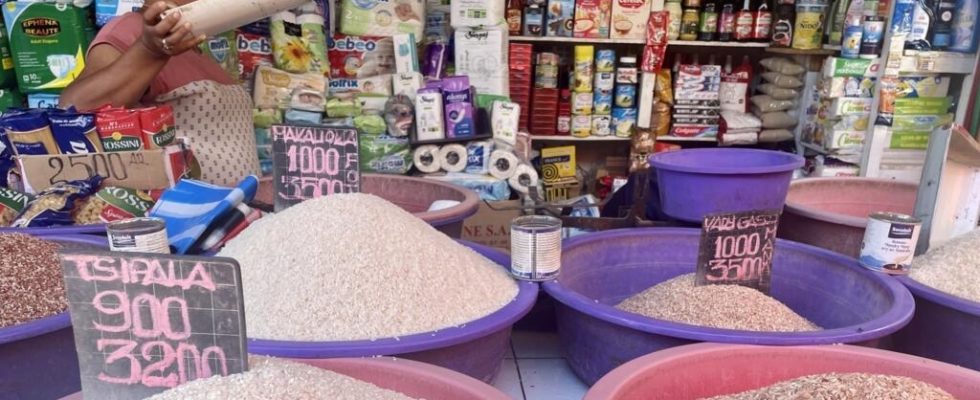In Madagascar, consumers are watching with concern the price of rice rising in recent days. This trend, classic during the lean period, is alarming this time more than usual. In certain stalls in the capital, the price of the food – consumed three times a day by most households – has already reached the symbolic threshold of 1,000 ariary per kapoaka, or 285 grams. In the stands of the Anosy district of Antananarivo, resourcefulness reigns between consumers and sellers.
2 mins
With our correspondent in Antananarivo, Pauline Le Troquier
The news took Mbolatiana’s clientele by surprise. Like this young woman who came to stock up for twelve people: no other choice than to give up local rice for Vary Stock, a low-quality imported variety, which has the advantage of swelling when cooked.
“ For her, I sell it at the price before the increase, I will recover the difference laterexplains the seller Mbolatiana. She buys here every day and this increase the surprise ! This difference allows you to buy matches, kindling… People are poor, every ariary counts, even for two kapoaka! »
At the same time, another customer listens, wanting to intervene. “ I bought 10 kapoaka, but it’s for a whole weekthe lady is indignant. Usually, we cook two kapoaka for each meal, but we went to one and a half. It’s not fair, we need to send the message to our president! »
At Jean-Claude’s stand, the labels are dizzying. 1,000 ariary for kapoaka of local makalioka white rice. Same thing for the very popular vary Gasy. This trader is especially afraid of the coming weeks: “ I don’t want to predict the worst, but we are only at the beginning of the lean season. This can still go up to 1,500 ariary per kapoaka. For the moment, the people are still silent, they are suffering. If you accept, so much the better, if not, too bad for you. »
In the aisles of the Anosy market, we remember that President Andry Rajoelina, just re-elected, placed rice at the heart of its latest campaign. Like five years earlier, promising self-sufficiency, still far from being achieved to date. The Big Island still imports the equivalent of 20% of its annual rice consumption.
